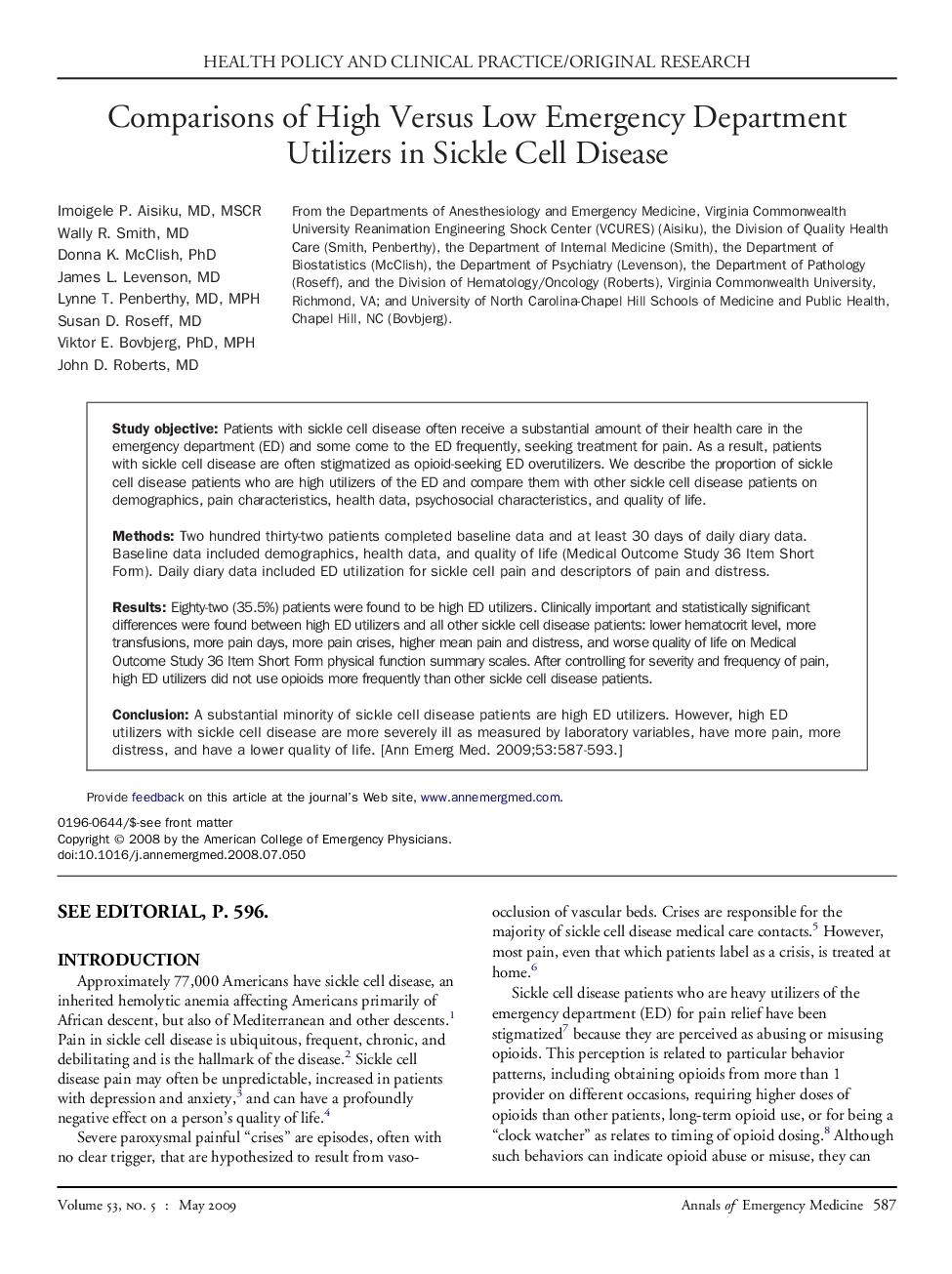| Article ID | Journal | Published Year | Pages | File Type |
|---|---|---|---|---|
| 3232229 | Annals of Emergency Medicine | 2009 | 7 Pages |
Study objectivePatients with sickle cell disease often receive a substantial amount of their health care in the emergency department (ED) and some come to the ED frequently, seeking treatment for pain. As a result, patients with sickle cell disease are often stigmatized as opioid-seeking ED overutilizers. We describe the proportion of sickle cell disease patients who are high utilizers of the ED and compare them with other sickle cell disease patients on demographics, pain characteristics, health data, psychosocial characteristics, and quality of life.MethodsTwo hundred thirty-two patients completed baseline data and at least 30 days of daily diary data. Baseline data included demographics, health data, and quality of life (Medical Outcome Study 36 Item Short Form). Daily diary data included ED utilization for sickle cell pain and descriptors of pain and distress.ResultsEighty-two (35.5%) patients were found to be high ED utilizers. Clinically important and statistically significant differences were found between high ED utilizers and all other sickle cell disease patients: lower hematocrit level, more transfusions, more pain days, more pain crises, higher mean pain and distress, and worse quality of life on Medical Outcome Study 36 Item Short Form physical function summary scales. After controlling for severity and frequency of pain, high ED utilizers did not use opioids more frequently than other sickle cell disease patients.ConclusionA substantial minority of sickle cell disease patients are high ED utilizers. However, high ED utilizers with sickle cell disease are more severely ill as measured by laboratory variables, have more pain, more distress, and have a lower quality of life.
